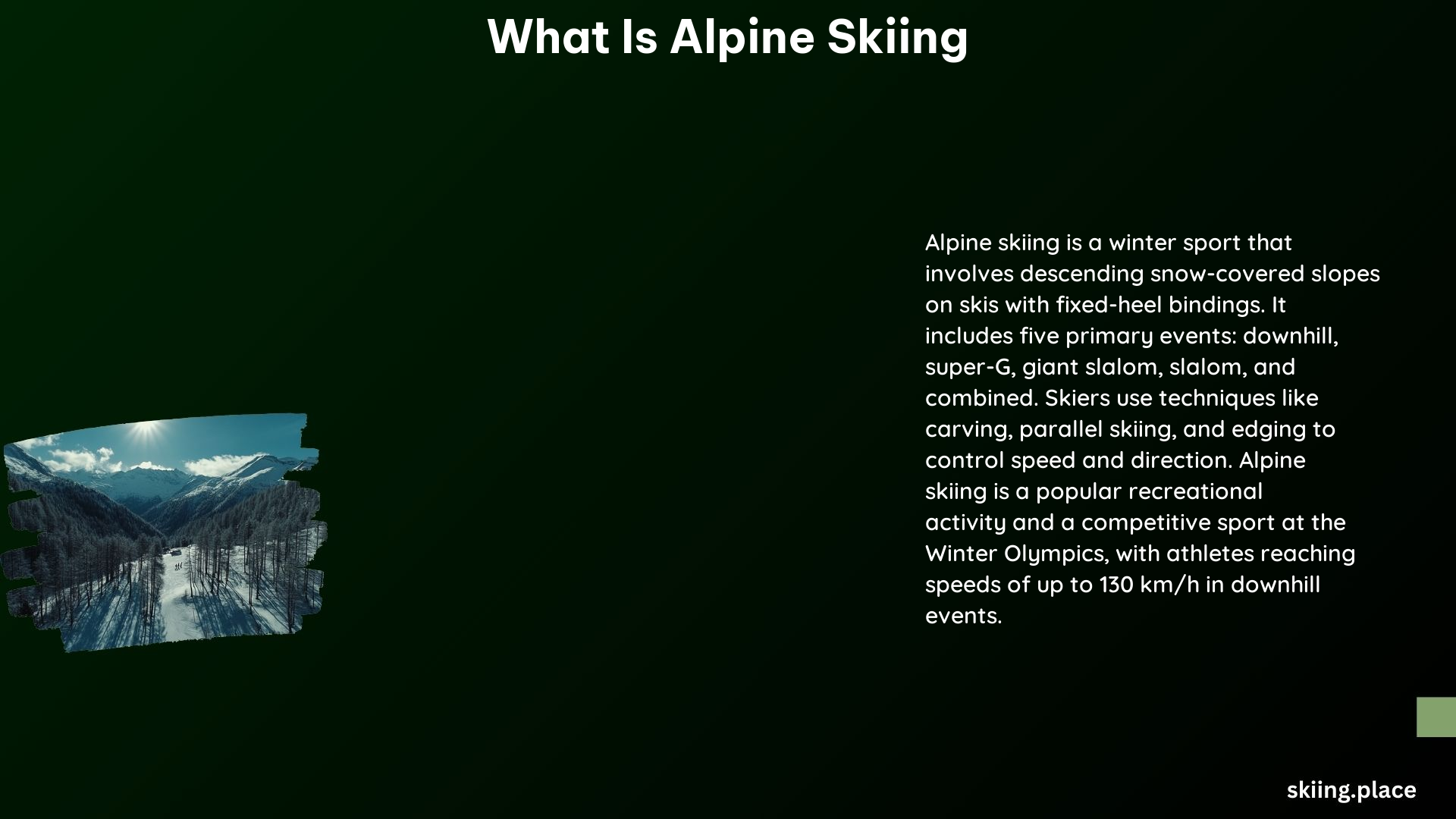Alpine skiing, also known as downhill skiing, is a popular winter sport that involves descending snow-covered slopes on skis with fixed-heel bindings. It is characterized by high-speed descents, turns, and jumps down specially designed ski slopes and mountains. Alpine skiing is distinct from downhill skiing in that it involves a broader range of techniques and styles, including carving, parallel skiing, and freestyle skiing.
What Are the Types of Alpine Skiing?
Alpine skiing encompasses several disciplines, each with its unique challenges and requirements:
- Slalom: A technical discipline that involves skiing through a series of gates on a shorter course, requiring agility, strength, and quick reflexes.
- Giant Slalom: Similar to slalom but with longer courses and wider gates, emphasizing speed and control.
- Super-G: A speed discipline that combines elements of downhill and slalom, with skiers reaching high speeds while navigating gates.
- Downhill: The fastest discipline, where skiers aim to complete a long, steep course in the shortest time possible, often reaching speeds of up to 130 km/h.
What Are Ski Resorts and Facilities for Alpine Skiing?

Ski resorts play a crucial role in alpine skiing, providing a variety of groomed slopes with varying levels of difficulty. These resorts typically offer:
- Groomed Slopes: Well-maintained trails with different levels of difficulty, from beginner to expert.
- Lift Systems: Chairlifts, gondolas, and other transportation systems to access the slopes.
- Ski Schools: Lessons and instruction for skiers of all levels, from beginners to advanced.
- Equipment Rentals: Skis, boots, and other gear available for rent.
- Food and Beverage: Restaurants, cafes, and bars offering a range of dining options.
Popular ski resorts include those in the European Alps, the Rocky Mountains in North America, and the Japanese Alps.
What Are Fixed-Heel Bindings in Alpine Skiing?
Fixed-heel bindings are a critical component of alpine skiing equipment. They:
- Secure the Boot: Keeping the skier’s boot firmly attached to the ski.
- Allow for Control: Enabling skiers to control their speed and direction by shifting their weight and applying pressure to the skis.
- Provide Stability: Fixed-heel bindings help maintain balance and stability, especially at high speeds.
How Does Alpine Skiing Differ from Cross-Country Skiing?
Alpine skiing differs significantly from cross-country skiing in several key aspects:
- Technique: Alpine skiing involves downhill descents and turns, whereas cross-country skiing focuses on traversing flat or gently sloping terrain.
- Equipment: Alpine skis are shorter and wider, with fixed-heel bindings, whereas cross-country skis are longer and narrower, with free-heel bindings.
- Environment: Alpine skiing takes place on groomed slopes in ski resorts, while cross-country skiing often occurs on trails in more natural, ungroomed environments.
What Are the Costs and Regulations in Alpine Skiing?
- Ski Passes: Average costs for ski passes vary by resort, but a single-day pass can range from $50 to $150.
- Equipment Rentals: Rental costs for skis, boots, and poles can range from $20 to $50 per day.
- Ski School Packages: Lessons and instruction packages can cost between $50 and $200 per day.
Regulations in alpine skiing include rules for safety, such as wearing helmets and following basic safety guidelines, as well as rules for competition, such as those governing course design and timing.
References
- Alpine Canada – Alpine skiing disciplines and equipment. https://alpinecanada.org/team/alpine
- Olympics.com – Alpine skiing events and rules. https://olympics.com/en/news/alpine-skiing-winter-olympics-sport
- Wikipedia – Alpine skiing overview and history. https://en.wikipedia.org/wiki/Alpine_skiing
